Chasing ghosts…
by Gavin Lautenbach, 21 August 2017
A Mammoth Safari to the Himalayas – the absolute escape to a wilderness second to none.
The journey to discover one of the planet’s most elusive animals begins in Delhi, India – home to what is the second largest urban area on earth with a population of 26 million, a stark contrast to the remoteness of what is the next stop in the Himalayas. The flight to the hamlet of Leh, the capital of the Ladakh district takes just over an hour and is incredibly spectacular, offering views of the vast peaks of K2, Nanga Parbat, Gasherbrum and the Nun Kun Massif. The old-worldliness of the destination suggests that one might well have traveled for a century back in time. Gone is the Delhi chaos of modernity, and this quaint altitudinous town with its incredible mountainous backdrop quite literally takes one’s breath away.

Leh sits some 3500m above sea level and is the ideal place to acclimatise to the altitude for this adventure.
At an altitude of some 3,524m or 11,562ft above sea level, the settlement of Leh provides the ideal place to acclimatize to the rarified air of the northern Indian mountains – and acclimatize one must, as soon one will venture even higher into the foothills of the Himalayas. Leh, is also relatively mild (using the word mild with the tongue pressed firmly in a chilly cheek) as temperatures here dip just below zero, nothing as cold as what will be experienced in the next few days.
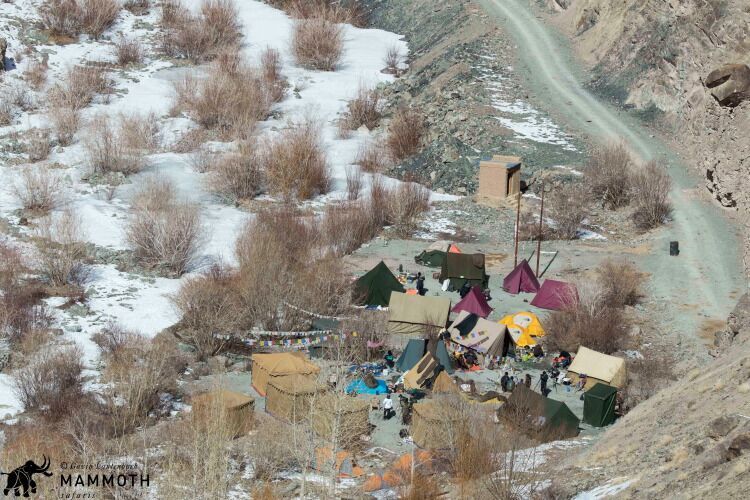
The very simple base camp provides basic and comfortable accommodations for the guests.
After a day in Leh, exploring the temple-lined streets of this predominantly Buddhist settlement, the level of excitement is palpable as soon the journey to find that ghost – the snow leopard – begins. The gentle exploratory strolling around the village is surprisingly fatiguing and a reminder of the need for a decent level of fitness for this expedition.
One arrives at what will be the base camp in the early afternoon of day 1 as the watery sun begins to disappear behind the huge walls of rock face that surround the temporary settlement. Thankfully, the amazing Himalayan packhorses are tasked with transporting the gear and the effort of walking is all one needs worry about as one ventures north the following day. The scenery here is almost indescribably beautiful.
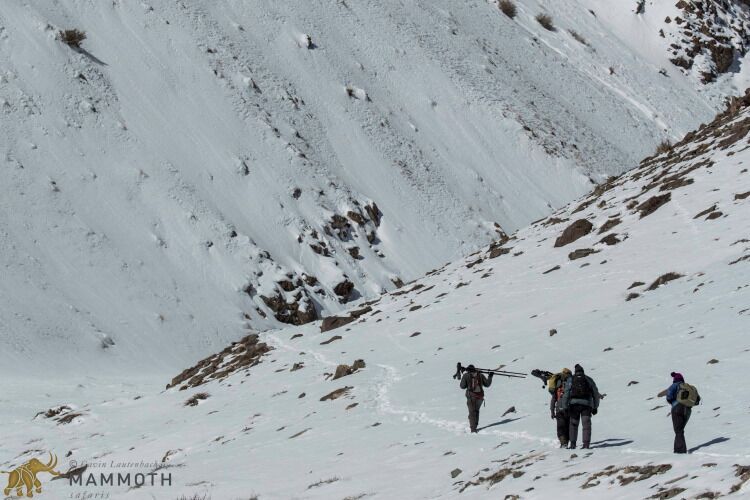
Snow is everywhere on this trip and the correct gear is critical to making the most of your time in India. Having the correct footgear is of particular importance, keeping your feet warm and comfortable is key.
One really needs to prepare both mentally as well as in terms of your choice of equipment for the cold. This is Himalayan cold and it is quite something else. Here at night, everything freezes – from your toothpaste to your toilet paper and keeping warm in the small tents is difficult, but critical.
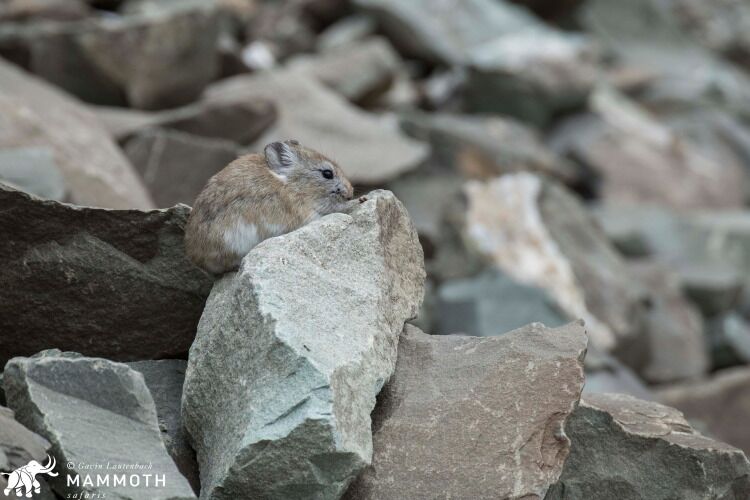
Native to cold climates, here is another little critter that can be spotted on the slopes of the Himalayas – the pika are small rabbit like animals that scurry across the rocks.
In order to make the most of a trip to the Himalayas to spot the snow leopard, one needs to ensure that one has all the proper equipment, everything from the warmest of clothes to a quality spotting scope, and of course a very decent camera to capture those special moments. There is a lot more to be seen in the mountains than just the leopards, and better equipment simply allows the experience to be that much better.
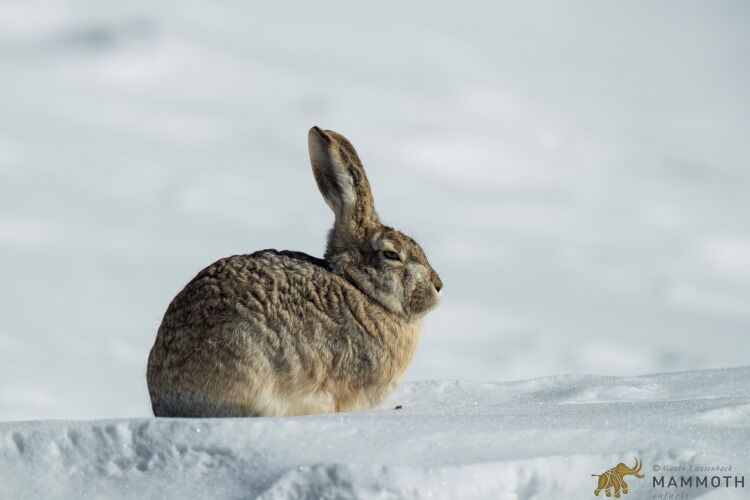
The wooly hare is considered to be endangered in India and is one of the special little creatures that can be seen on the slopes.
It is to the rocky mountains that spotting scopes are aimed, following the movements and area of traversing of the blue sheep (bharal) and ibex. Heavy snows will push these two prey species further down the mountain slopes, increasing the chances of spotting the rare cat on the hunt. Thus the quantity of snow is often key to improving your chances of spotting the ghost.
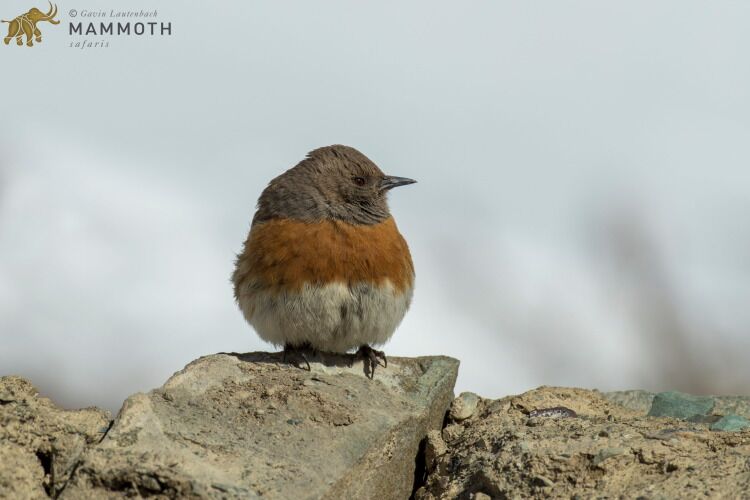
The robin accentor is native to the high altitudes of the mountainous regions of Nepal, India, Pakistan, China and Bhutan.
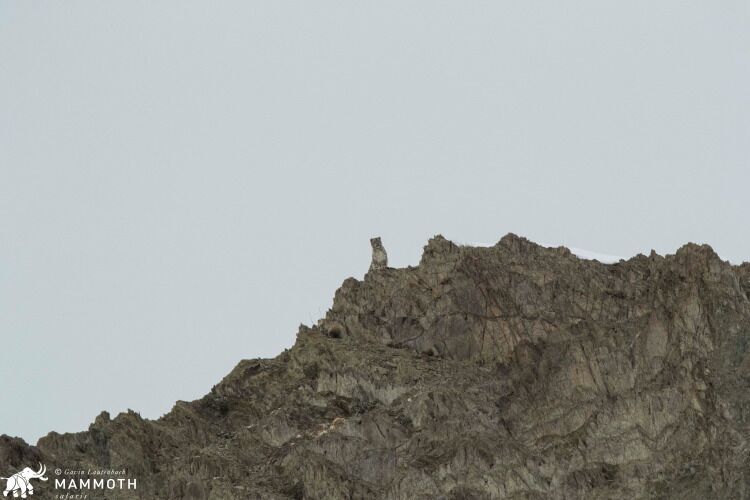
The first time you spot the snow leopard will generally be at some distance, but will be a moment that you will never forget.
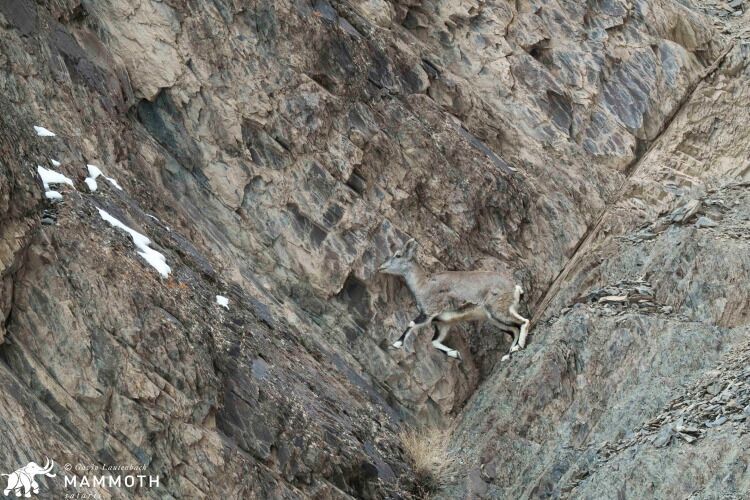
The bharal or Himalayan blue sheep is incredibly well adapted to survival in this rocky and cold environment. Here it demonstrates the ability to effortlessly leap from ragged rock to ragged rock.
A bit about the ghost…
The smoky grey snow leopards are slightly smaller than their African counterparts, typically weighing between 35 and 55 Kg, with the male cats considerably larger than the females. The elusive cats are found in the mountains across of central Asia, with an estimated population of between 4000 and 6500 roaming these high altitude mountains. They are incredibly secretive and move very slowly and carefully to avoid detection.
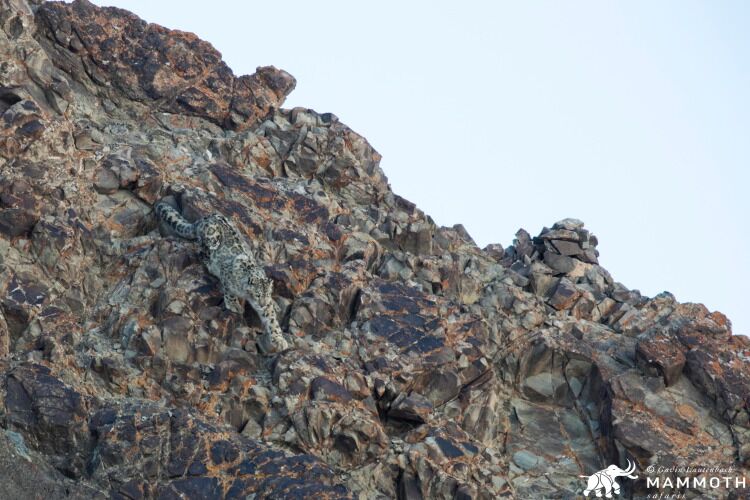
Climbing down a rock face and demonstrating its incredible camouflage – here the snow leopard shows just why it is not an easy cat to spot.
The beautiful, grey mottled creatures have thick fur coats, enabling them to survive the cold conditions of their mountainous home and an exceptionally long tail too, which aids in balance. They also use their tail like a scarf to keep their face warm during snowstorms. These leopards have large paws, which act like snowshoes, distributing their weight and helping them to skillfully traverse the powder and ice. Their short strong legs – a distinguishing feature – aid with leaping. Like all the leopards, these cats are also very agile and they can easily clear a 20ft gap in a single leap.
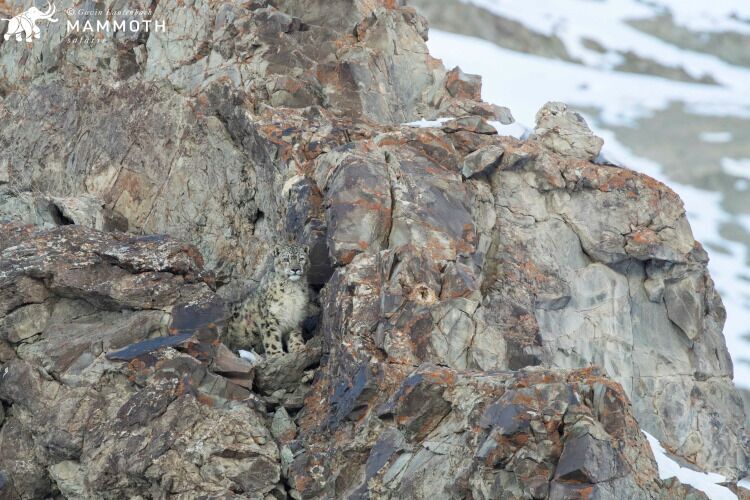
The distinctive stocky frame of a snow leopard blends effortlessly into the environment.

Here a magpie flies past the ever alert cat. Action in these stark conditions comes not only from the elusive snow leopard.
A starting point for the search for the not often sighted snow leopard is the realization that one may spend 7 cold and largely uncomfortable days without so much as glimpsing a cat. As with all wilderness experiences, there is no guarantee of ultimate success, but the journey and the search is a success all of its own, something to be relished and celebrated too.

The ghost… the snow leopard hugs the rock face and once again shows just why this cat is such a prize to spot.
As is typical of the bespoke and uniquely tailored tours provided by Mammoth Safaris, the group sizes are small, which affords much flexibility and the ability to jostle for perfect scope positioning. The small group size makes for intimate experiences and will allow for the experience to truly come to life. The entire party with which you will journey sees the group sizes strictly controlled through a permitting system. The Mammoth team will always be a small group within that larger group and we will make sure that you are very well taken care of.
Arranging a trip to search for the ghost that is the snow leopard is no small feat, there is much to consider and arrange. There is an inherent complexity organising such a trip and we specialise in taking care of all those little things one might not think of. Let us take care of your journey from start to finish and ensure that this journey of a lifetime truly is an unforgettable one.
How to make this journey of a lifetime a reality…
For more information on how to book your Mammoth Safari to search for wilderness, adventure and that elusive snow leopard contact a member of our sales team by sending an email to info@mammothsafaris.com and visit www.mammothsafaris.com for more destinations and journeys.

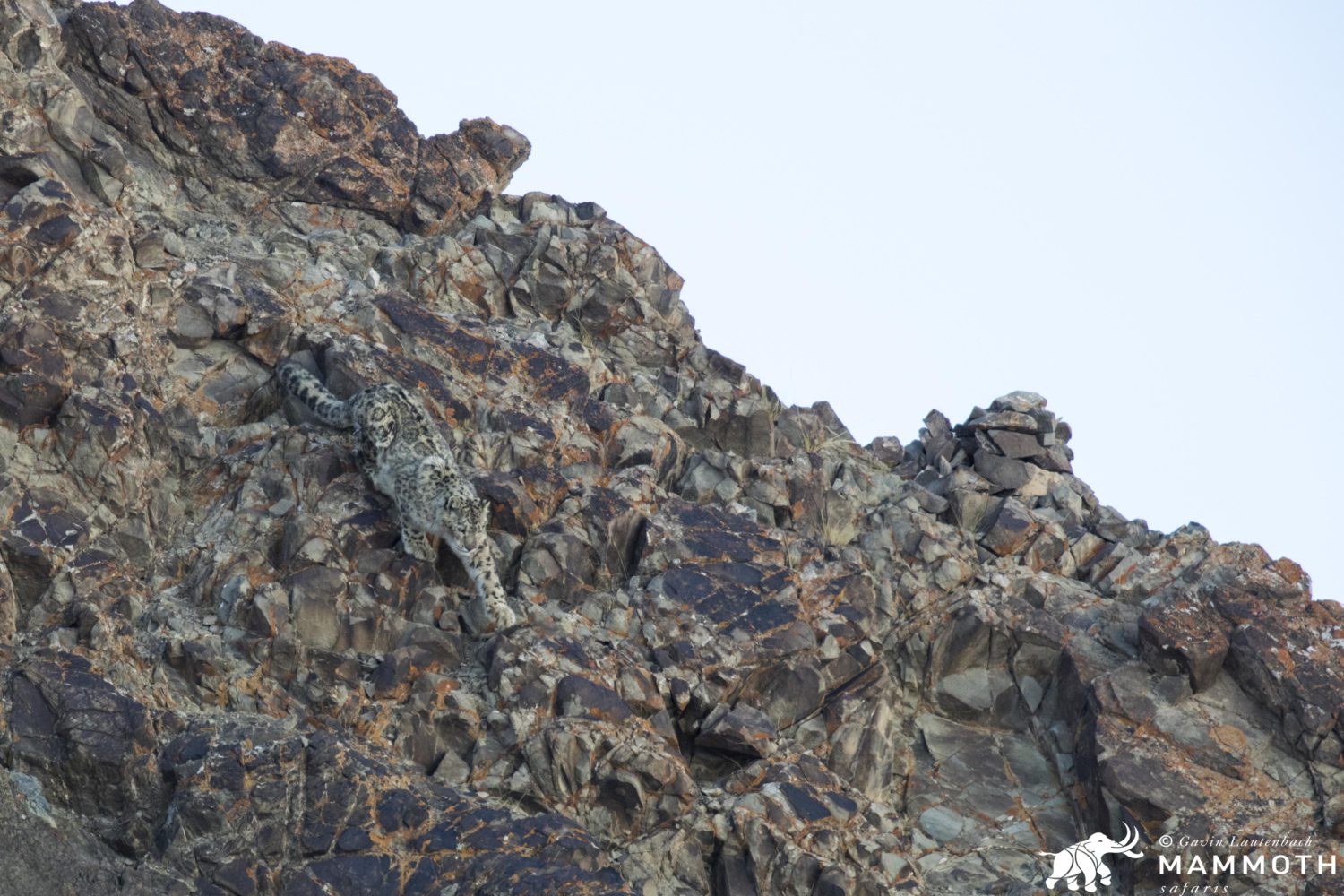


Leave a Reply
Want to join the discussion?Feel free to contribute!